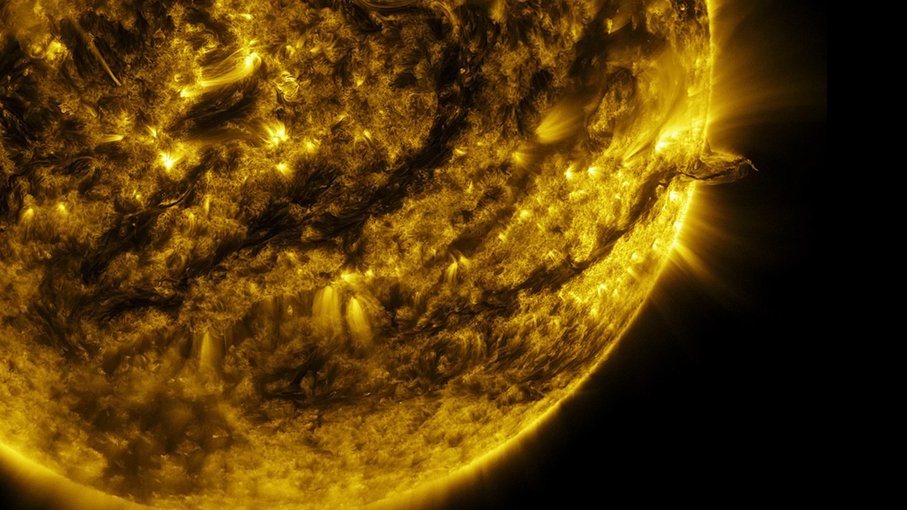
Aug. 10, 2018
Program News
Prebiotic Conditions of the early Solar System
Summary of the 2018 symposium, "Environments of Terrestrial Planets Under the Young Sun: Seeds of Biomolecules”

A bridge of suspended solar material, called a solar prominence, extends over the sun's limb in this image taken by Solar Dynamics Observatory (SDO).Image credit: NASA/SDO.
A recent symposium supported by NASA Astrobiology focused on the prebiotic conditions of the early Solar System, generating conversations relevant to understanding habitability and whether or not life could be a common phenomenon among the stars.
“Environments of Terrestrial Planets Under the Young Sun: Seeds of Biomolecules” was held from April 9-13, 2018. The symposium was a major international and interdisciplinary conference in the ‘emerging area of astrobiology covering astrophysical, physico-chemical, atmospheric and geological aspects of environments of early terrestrial planets with a focus on the impacts of the young Sun’s space weather on the precursors of life.’ A major objective was to help unify and coordinate efforts to ‘understand, and characterize heliophysical, magnetospheric, ionospheric, climate and their interaction with geological environments on the early Earth, Mars and Venus and their impacts on the initiation of prebiotic chemistry.’
The official website of the symposium is available here.
A summary of the conference discussions and findings, “Terrestrial planets under the young Sun,” was published in the journal Nature: Astronomy. The symposium was supported by the NSF/NASA Center for Chemical Evolution (CCE) at the Georgia Institute of Technology in Atlanta, Georgia. The CCE is a collaborative program supported by the National Science Foundation (NSF) and the NASA Astrobiology Program. Support also came from the Nexus for Exoplanet System Science (NExSS). NExSS is a NASA research coordination network supported in part by the NASA Astrobiology Program. This program element is shared between NASA’s Planetary Science Division (PSD) and the Astrophysics Division.